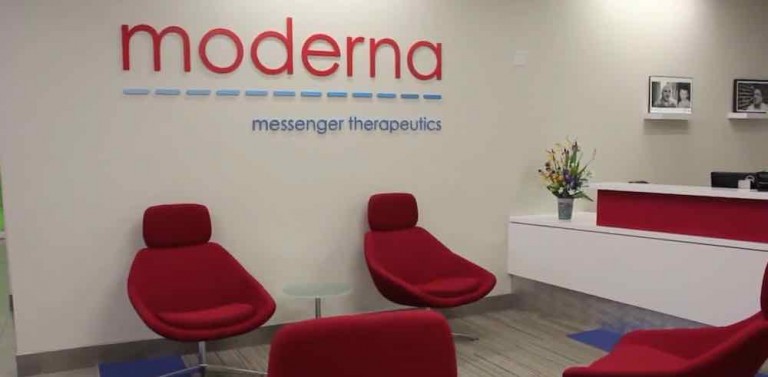
For many development stage biotech companies, pushing candidates into clinical trials and speeding through an IPO to fund these trials is a vital first step towards commercialization. It’s a tried and tested strategy, and one that history has demonstrated has varying degrees of success. Many companies fail to find funding for later stage trials, be it through further share issue or a big pharma partnership, and discontinue trials as a result. Just as often, if not more so, the drug candidates with which the company justified its IPO prove ineffective, or dangerous, and again, trials are discontinued. It is these two scenarios that make the dev-stage biotech space a risky allocation. Every so often, however, a company comes along that looks to offer a risk mitigated exposure. One such company has just hit headlines in pharma.
Moderna Therapeutics just reported its transition from a preclinical to a clinical stage biotech, with the company getting off to a running start with no fewer than six target candidates slated for phase I this year. It comes after a three-year period of fundraising, deal making and technology-honing – a period that has allowed Moderna to bolster its pre-trial position and mitigate many of the risks mentioned in the introduction to this piece.
Of course, there is a catch. It’s a private entity.
This doesn’t mean we can’t pick up an exposure, however. In fact, there are numerous options for those looking to get behind Moderna. Here’s how.
First, let’s quickly run over the company’s operations and financial position. Moderna operates in the messenger RNA (mRNA) space. As usual, the science behind the technology that the company has developed is pretty complicated, but we can summarize as follows: mRNA is a bunch of RNA molecules that – initially – are present in combination with DNA in the nucleus of a cell. When mRNA uncouples from DNA, it travels to what are called ribosomes, which are molecular complexes (again found in all nucleated cells) responsible for protein synthesis. The best way to think of ribosomes is as a sort of protein making machine, and mRNA as both the instructions and the raw material with which the machine constructs a particular protein. Proteins are one of the most versatile and important biomolecules in our bodies, and the ability to control this synthesis process opens up a whole world of possible therapies, and it is this ability that Moderna has developed. The company has figured out a way to create artificial mRNA, and more importantly, a way to make this mRNA elude the body’s immune system (normally the immune system would recognize the mRNA as foreign and attack it on introduction).
So what does this mean? Well, it means that Moderna can create mRNA to synthesize pretty much any protein, and use these proteins as the basis of therapy. Additionally, the company has developed the first ever intracellular protein synthesis technique. Protein synthesis has been possible for a while through various techniques, but only extracellular (i.e. blood stream) and expressed (i.e. on the outer membrane of the cell). With Moderna’s development, we can now create proteins that stay in the cell, and this greatly widens the potential target indications.
So the company has what amounts to a revolutionary technology, let’s move on to its financial position. At the end of 2015, Moderna reported its cash position as a little over $800 million. The cash has amassed as the result of a couple of financing rounds, totaling $1.2 billion since the company formed in 2011. Throughout 2016, Moderna plans to invest $100 million in each of four separate sub-entities, each of which will target a separate space – oncology, rare diseases, infectious diseases and cancer vaccines – which brings us nicely onto potential exposure options.
Our options lie in the host of big pharma collaborations Moderna has set up over the past few years, and its intentions to carry these partnerships into clinical trials this year. Three big names are available to us – Alexion Pharmaceuticals, Inc. (NASDAQ:ALXN), Merck & Co. Inc. (NYSE:MRK) and AstraZeneca PLC (NYSE:AZN) in rare diseases, infectious diseases and cardiovascular therapy respectively. The three drugs in question are MRK177 (Merck), ALXN 1540 (Alexion) and AZD 8601 (AstraZeneca) – all of which Moderna plans to push into clinical development this year, and all of which have the potential to be game changers in their respective spaces.
So there we go. A direct exposure to Moderna may not be possible as things stand, but an investor looking to buy into the company’s game changing tech, and sturdy financial footing, can do so through an allocation towards one or more of its big pharma collaborators. Final word – Moderna is one to watch throughout 2016.




